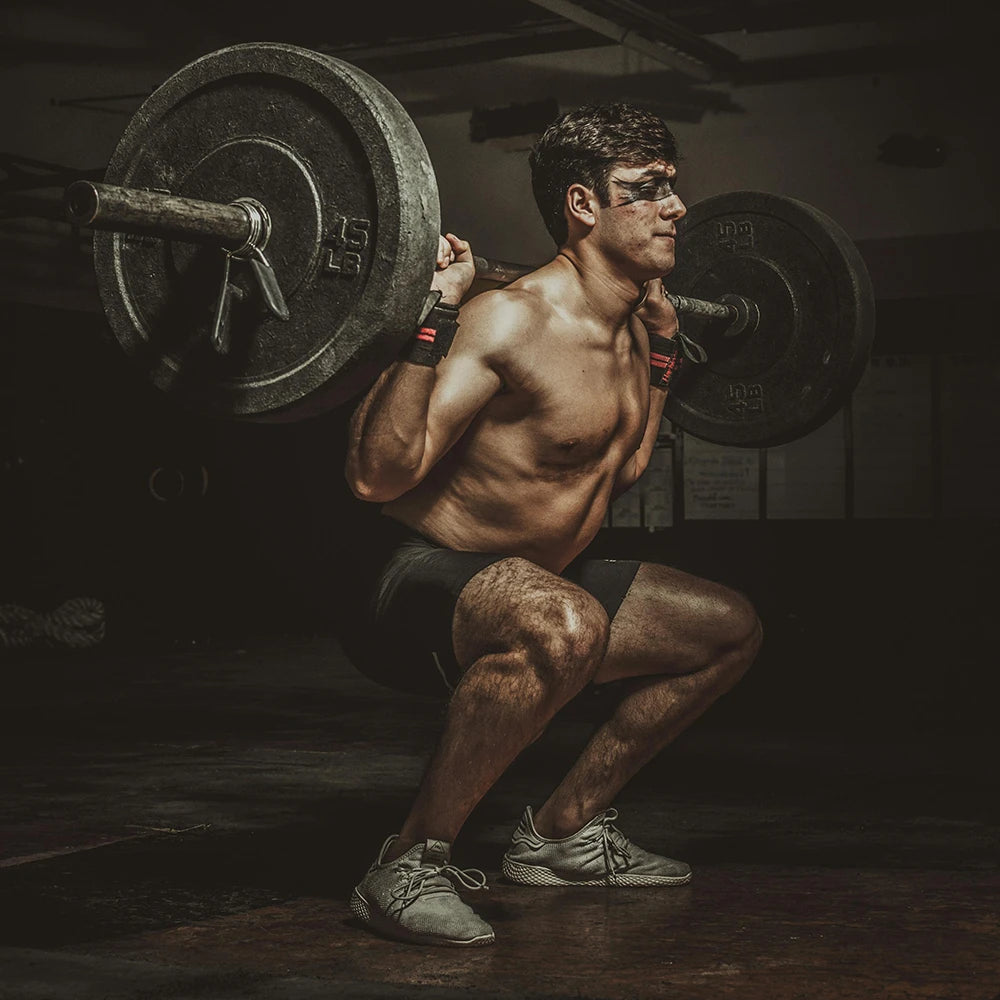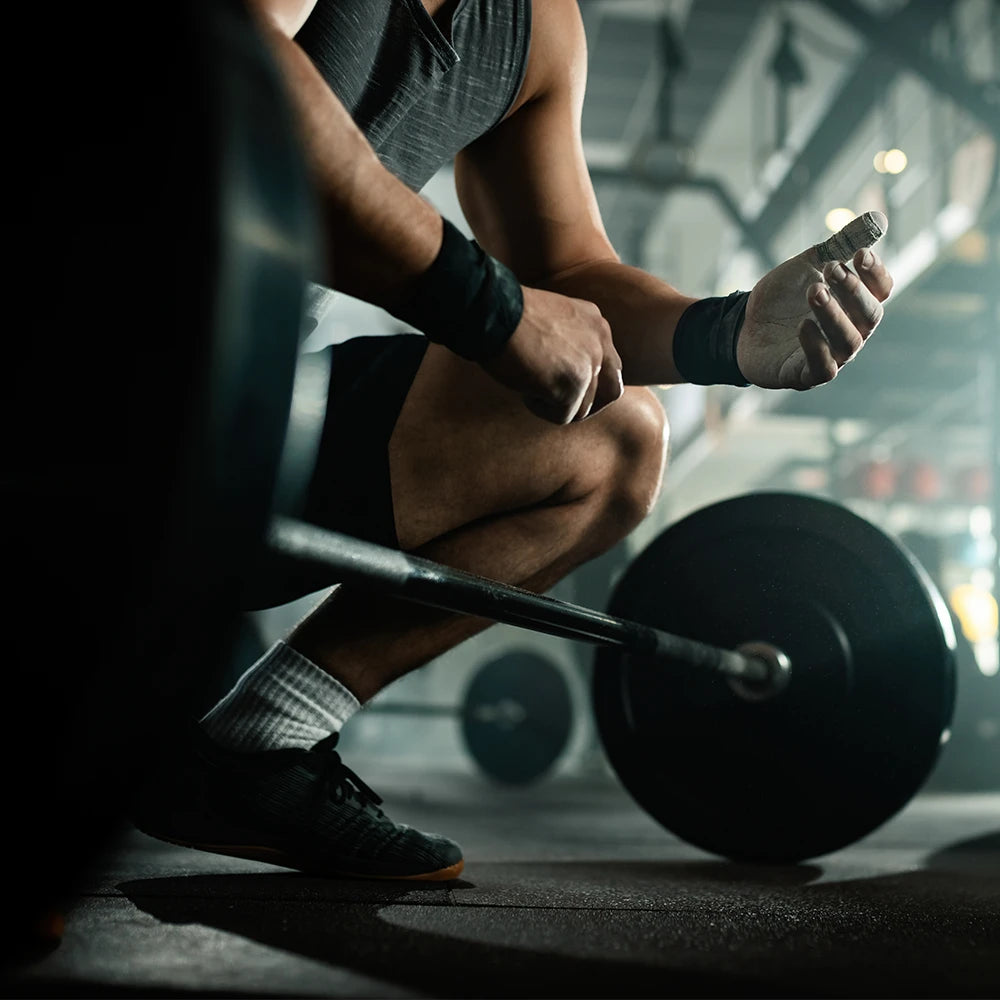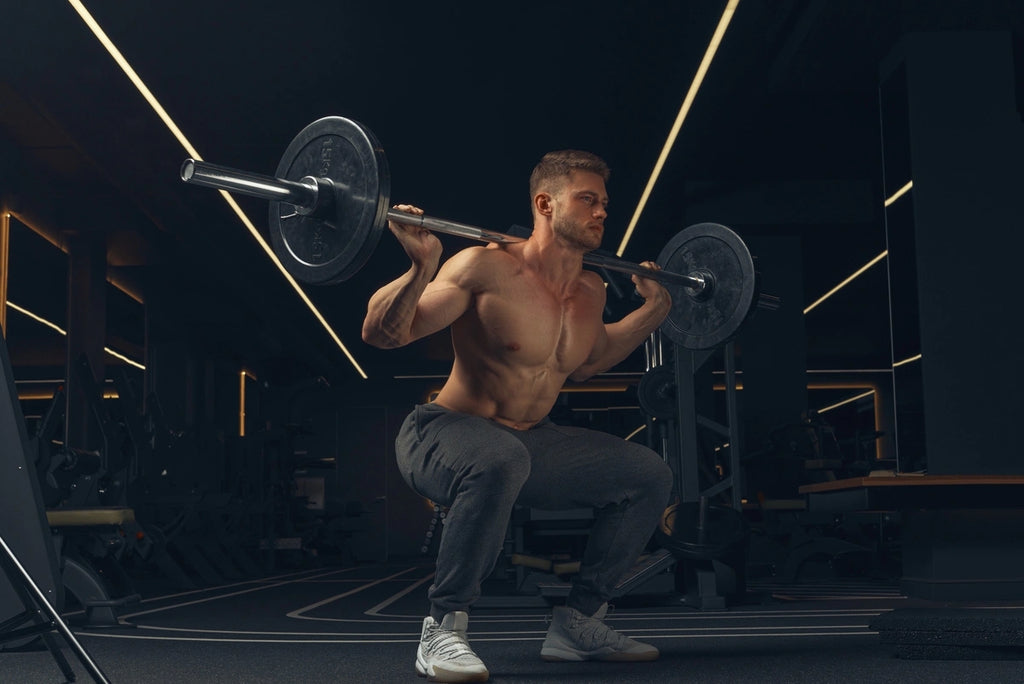Full Body Squat Workouts: Are Squats a Full-Body Exercise?


Are Squats a Full-Body Exercise?
Squats are often hailed as one of the most effective exercises, but are they truly a full-body workout? The answer is yes.
While squats are primarily known for targeting the lower body, particularly the quadriceps, glutes, and hamstrings, they engage much more than just these muscle groups.
When performed correctly, squats activate the core muscles, including the abdominals and lower back, to stabilize the body throughout the movement.
Additionally, depending on the variation and whether weights are used, squats can also engage the upper body, particularly the muscles in the shoulders, chest, and back, as they work to maintain proper posture and balance.
In essence, squats are a compound movement that recruits multiple muscle groups simultaneously, making them an efficient and effective full-body exercise.
This is why they are a present in many workout routines, from beginners to advanced athletes, and why incorporating squats can lead to significant improvements in overall strength, endurance, and flexibility.
What is a full body squat workout?
A full body squat workout is all about using squats to engage your entire body. It’s not just about bending your knees and hoping for the best.
This routine involves various squat forms that target different muscle groups, ensuring that you’re not just working your legs but also your core and upper body.
The basic squat is where it all begins. Stand with your feet shoulder-width apart, lower your body as if you’re about to sit in a chair, and then rise back up.
It’s simple yet effective, primarily targeting the quadriceps, glutes, and core. Think of it as the bread and butter of strength training.
Then there’s the goblet squat. Picture yourself holding a kettlebell close to your chest while squatting.
This variation forces you to keep your torso upright, engaging your core and upper body muscles. It’s like a squat with a side of upper body workout, making it a fantastic addition to your routine.
The barbell squat is the way to go for those looking to up the ante. With a barbell resting across your shoulders, you’ll increase the load on your muscles, promoting strength and muscle growth.
Just be sure to have proper form; otherwise, you might end up with a backache instead of gains.
Jump squats add a fun twist. By incorporating a jump at the top of the squat, you not only increase intensity but also engage your cardiovascular system.
It’s a great way to improve agility and explosive power.
Lastly, the pistol squat is a single-leg wonder. This one requires balance and strength, targeting the quadriceps, glutes, and core more intensely.
Benefits of full body squats
Muscle engagement is one of the biggest perks of squats. They work multiple muscle groups simultaneously, including the quadriceps, hamstrings, glutes, calves, and core.
When you add weights, you also engage your upper body. It’s like a full-body workout in one move, saving you time and effort.
Burning calories is another significant benefit. Squats engage large muscle groups, making them effective for calorie burning.
If weight loss is on your agenda, incorporating squats into your routine can be a game-changer. It’s like having a workout buddy that helps you shed those extra pounds.
Improved flexibility and balance come hand in hand with regular squatting. As you squat, you enhance joint flexibility and balance, which are crucial for overall mobility.
This is especially important as we age; maintaining flexibility can prevent injuries and keep you moving freely.
Core strengthening is a natural byproduct of squats. The need to stabilize your body during the movement helps strengthen your core muscles.
A strong core can improve your posture and reduce the risk of back injuries. It’s like building a solid foundation for a house; everything else stands stronger on it.
A weight lifting belt can be a helpful tool in your squat arsenal. It provides support to your lower back and helps maintain proper form during heavy lifts.
Think of it as a safety net that allows you to push your limits while keeping your back safe. It’s not a magic fix, but it can certainly make a difference.
Structuring a full body squat workout
Creating a full body squat workout routine can be as simple or complex as you want it to be. For beginners, a sample workout might include three sets of 10-15 basic squats, followed by two sets of 8-10 goblet squats.
This approach allows you to build a solid foundation without overwhelming yourself.
As you progress, intermediate and advanced routines can feature different squat forms. For instance, you might incorporate barbell squats, jump squats, and pistol squats into your weekly regimen.
This not only keeps things interesting but also challenges your muscles in new ways.
Maximizing effectiveness is crucial. Always include warm-up and cool-down routines to prepare your body for the workout and aid recovery afterward.
Recommended sets, reps, and rest intervals can vary, but a good rule of thumb is to aim for 3-4 sets of 8-12 reps with 30-60 seconds of rest in between.
A barbell pad can also enhance your squat experience. It cushions the barbell against your shoulders, making heavy lifts more comfortable.
It’s a small addition that can make a big difference, especially for those who are just starting out or looking to increase their weights.
Tips for performing squats safely
Proper form is non-negotiable when it comes to squats. Ensure your knees track over your toes, your back remains straight, and your weight is on your heels.
This alignment helps prevent injuries and ensures you’re getting the most out of each squat.
Depth is another important factor. Aim to squat until your thighs are at least parallel to the floor, but only go as far as your flexibility allows without compromising form.
It’s better to do a shallower squat correctly than to push for depth and risk injury.
Progression is key to improvement. Start with bodyweight squats and gradually add weights as your strength and technique improve.
Using a home gym squat rack or a power rack can enhance safety, especially when lifting heavier weights.
Features like spotter arms and safety pins can provide an extra layer of security, allowing you to focus on your form without worrying about dropping the bar.
7-day full body squat routine
Planning a week of full body squat workouts can keep things fresh and exciting. Here’s a day-by-day breakdown to get you started:
Day 1: Basic squats and goblet squats. Aim for three sets of 10-15 reps for each.
Day 2: Jump squats and barbell squats. Try four sets of 8-10 reps for each, focusing on explosive movement for the jump squats.
Day 3: Active recovery. Consider light stretching or yoga to keep your muscles engaged without overdoing it.
Day 4: Pistol squats and basic squats. Work on mastering the pistol squat, aiming for three sets of 5-8 reps on each leg.
Day 5: Goblet squats and jump squats. Increase the weight for goblet squats and focus on height for jump squats.
Day 6: Barbell squats and a mix of other squat variations. Aim for four sets of 6-8 reps, challenging yourself with heavier weights.
Day 7: Rest day. Listen to your body and allow it to recover fully before starting the cycle again.
Combining this squat routine with other exercises, like lunges or push-ups, can create a balanced week of workouts. Active recovery days are essential for muscle repair and growth, so don’t skip them.
Final thoughts
Full body squat workouts are a fantastic way to enhance overall fitness. They engage multiple muscle groups, burn calories, and improve flexibility and balance.
Consistently integrating squats into your routine can lead to significant strength gains and better overall health.
Listening to your body is crucial. If something doesn’t feel right, don’t push through the pain.
Adjust your routine as needed and respect your limits. Consistency is key, but so is self-care.
So, lace up those sneakers, find your groove, and let squats be a part of your fitness journey.











